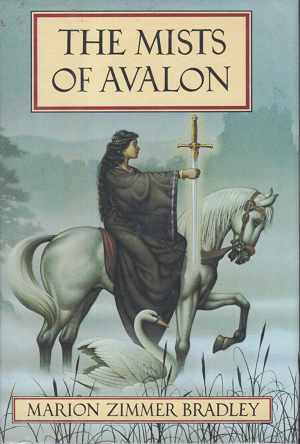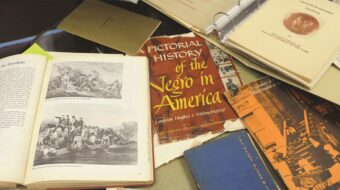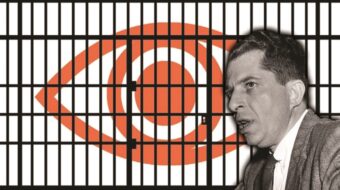
Let’s face it: many of the traditions of the holiday season, whether you celebrate it as Christmas or something other, are rooted in fantasy. It’s a time for inspiration and wonder. It’s also a time when working class people get together with one another, spending time with family and friends. And, if you live in certain parts of the world, and especially if you live in most of the U.S., the holidays are cold.
This all amounts to an ideal opportunity to sit by a fireplace and get lost in a long, epic work of fantasy. But if you’re a major consumer of the genre, you’re doubtlessly familiar with all the tropes and narrative motifs. It’s understandable that you might therefore want something with an influx of originality. And so, without further ado, here are, in this writer’s opinion, the top 10 most unique works of fantasy. Happy reading!
10. On Stranger Tides
by Tim Powers, 1987
By far the best pirate novel I’ve read, it also happens to be an interesting – and delightfully non-medieval – fantasy. Set in the early 1700s, it follows a French puppeteer who sails to Jamaica to confront his uncle, who has stolen a fortune that belonged to his father. Along the way, he becomes inveigled with pirates who are working with Caribbean magic, and who have allied themselves with Blackbeard in order to find the Fountain of Youth. With a straightforward plot, On Stranger Tides is a page-turner, nevertheless, and it was also the inspiration behind some of the Pirates of the Caribbean films.
9. Imaro
by Charles R. Saunders, 1981
This is yet another entry in the sword-and-sorcery subgenre, but it’s not at all the trite, repetitive affair you might expect. The first novel written in this subgenre by an African-American author, Imaro is a collection of six stories featuring the eponymous black hero in the fictional and African-inspired world of Nyumbani. It follows Imaro as he leaves his family tribe of warrior-herdsmen after breaking a taboo, and must embark on a quest to find acceptance and identity, making allies and enemies alike along the way and encountering dangerous beasts and demons. Though it takes cues from Edgar Rice Burroughs and Robert E. Howard, Imaro is truly unique in that its cultural foundations are not European, and this opens the door for many new possibilities, which continue to be explored in the next three books in this ongoing series.
8. Age of Witches
by Maryna and Serhiy Dyachenko, 1997
The next unique novel on our list certainly is European, but of a decidely more Slavonic influence. Written by a Ukrainian couple from Kiev, the book is one of many such works by them. This one focuses on the unlikely alliance of a witch on the run from those persecuting her, and an executioner ordered to carry out an anti-witch inquisition. Dealing with themes of prejudice and promiscuity, with underlying critiques of nuclear energy, divorce from nature and countryside, and blind hatred, Age of Witches is a book far different from any witchcraft-based work you may have read before. It is also heavily based on Slavic mythology and folklore – an area that the fantasy genre rarely tackles.
7. A Wizard of Earthsea
by Ursula K. LeGuin, 1968
Before Harry Potter, there was another series focusing on young wizards that, by and large, flew under the radar, though it is just as deserving of praise as anything written by J. K. Rowling. Set on an archipelago named Earthsea, it focuses on a young mage named Ged who attends a school of wizardry. LeGuin said it was a direct response to the – at the time – cliché of wizards being old, wise, and benevolent; this was the first to depict young wizards who were unpracticed and uncertain of themselves, and this would very much serve as the prototype for later works like Harry Potter. LeGuin is also very supportive of environmentalism, progressive politics, and racial equality; all of these elements are readily apparent in this novel and her other works.
6. Yellow Back Radio Broke-Down
by Ishmael Reed, 1969
Another overlooked and underrated treasure, this was written not only as atypical fantasy, but as satire of the traditional western. It follows the story of the Loop Garoo Kid, an African-American cowboy who practices the religion of Neohoodooism. It deals largely with his struggles against major established religions and cultural oppression. From criticizing the Catholic Church to protesting capitalism, this novel was rather progressive for its time, and registers just as much so today. It was also regarded by several sources as one of the top 100 books of the 20th century; considering it shares a list with The Grapes of Wrath, The Call of the Wild, and Dune, that’s quite a designation.
5. The Mists of Avalon
by Marion Zimmer Bradley, 1983
If you’re a frequent reader of fantasy, chances are you’re quite familiar with Arthurian fantasy. If you’ve read Tolkien, I’m sure you’ve also read The Once and Future King and King Arthur and His Knights of the Round Table. Bradley’s novel, however, tells the Arthurian legend largely from the perspective of female characters. In doing so, it also takes on an entirely new direction. Its protagonist is Morgaine, a priestess fighting to save her Celtic culture from an impending patriarchal Christianity, which threatens to destroy her pagan way of life. Here, King Arthur and his knights serve as supporting characters, existing on the periphery of the narrative while Morgaine and other women lead the charge. A feminine interpretation of a previously male-centered legend, The Mists of Avalon is far from a retelling; it’s an entirely new story that builds upon an established mythos.
4. American Gods
by Neil Gaiman, 2001
There’s not much high fantasy out there that blends elements of Americana with the myths and gods of old. American Gods, however, does just that, and with tongue planted firmly in cheek, to boot. The basic premise of the story is that all the old gods existed because people believed in them, and many immigrants, through their cultures, brought many of these deities with them to the United States. However, the power of the gods has diminished over the centuries as people’s belief in religion faded, and new ones have arisen, reflecting Americans’ infatuations with media, celebrity, technology, and drugs. Full of brilliant social commentary and an exciting story, this is definitely one to read if you haven’t done so already. Gaiman is already planning to write a sequel, and the book will be adapted as a television series in 2016.
3. Servant of the Underworld
by Aliette de Bodard, 2010
The first entry in the Obsidian & Blood series, Servant of the Underworld is an Aztec fantasy written by a French-Vietnamese author. It focuses on the ancient Aztec empire, only here, the gods are real, and their wrath and the ensuing end of the world is kept at bay only by human sacrifice. When the priestess responsible for these rituals vanishes, Acatl, the High Priest of the Dead must find her in order to avert worldwide disaster. Combining high fantasy with elements of a locked room mystery, this is the beginning of an excellent dark and gritty series.
2. Words of Radiance
by Brandon Sanderson, 2014
This is actually the second and most recent entry in the epic fantasy series The Stormlight Archive, but I feature this one because it is even more creative and intriguing than the first. Set in a world in which the very landscape and weather are bizarre and innovative, it continues the stories of several characters who are struggling to prevent civil war, while also fighting to prevent the return of the Voidbringers – all-powerful entities that will usher in a devastating cataclysmic event called the Desolation. Each of these books seems to focus on a different character, with this one heavily featuring Shallan, a young woman who is a skilled artist with a photographic memory, and who is a type of magic-user called a Soulcaster. Sanderson has managed to write a very interesting and empathetic female character here, and I think that is the true reason why this book, in particular, is so much more powerful than the one that preceded it. With its compelling saga and atypical magic system, The Stormlight Archive could become the next Game of Thrones. And like Game of Thrones, each of these books are 1,000+ pages, so if you like long books, give this one a read.
1. The Green Child
by Herbert Read, 1934
A completely forgotten classic, the story is based somewhat on the real 12th century legend of two green children who mysteriously appeared in the English village of Woolpit, speaking an unknown language. Read’s work has a certain philosophical quality to it, with the overall theme of the book being the search for the meaning of life. It also contains autobiographical elements of Read’s experiences in the British Army during World War I. It focuses on the former leader of a South American country who returns to his native England. There he encounters and saves the life of a strange, green-skinned young girl, and together they embark on a journey into strange and mesmerizing realms. Summarizing the plot simply does not do the book justice, and this is a highly offbeat but nonetheless captivating must-read. It’s also the only novel written by Read, who devoted the rest of his time to poetry, anarchism, and literary criticism.
Photo: “The Mists of Avalon” | Wikipedia (CC)












Comments